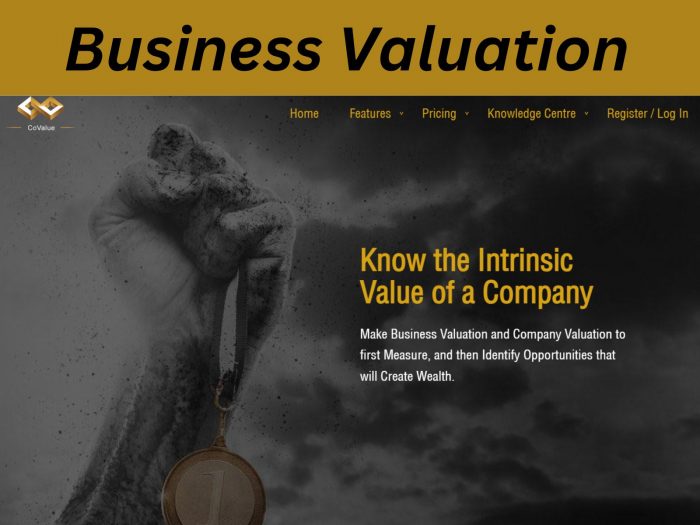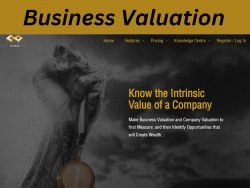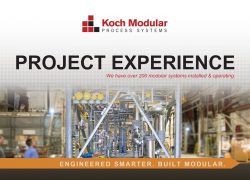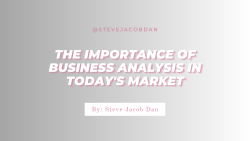Unlock Business Valuation: Learn 10 Essential Methods and Formulas to Determine the Value of a Company.”
Business valuation is the process of determining the current value or worth of a business. There are various factors that are taken into account when determining the value of a business, including financial and non-financial information. The valuation process is important for a variety of reasons, including determining the selling price of a business, assessing the value of a business for tax purposes, and evaluating investment opportunities.
There are several methods used to determine the value of a business, and each method has its own advantages and disadvantages. Some of the most commonly used methods for business valuation include Discounted Cash Flow (DCF), Discounted Future Earnings (DFE), Dividend Discount Model (DDM), Enterprise Value to Earnings Before Interest, Taxes, Depreciation, and Amortization (EV/EBITDA), Price to Earnings (P/E), Price to Sales (P/S), Book Value, Price to Book, Liquidation Value, and Market Capitalization.
Discounted Cash Flow (DCF) Model
The Discounted Cash Flow (DCF) method is a widely used and most accepted business valuation method in finance and investment. It involves forecasting future cash flows of a business and discounting them back to their present value using an appropriate discount rate. The cash flows used in the model include both the expected cash flows during the forecast period and the expected cash flows beyond that period, commonly referred to as the terminal value. The terminal value represents the estimated value of the business beyond the forecast period and is typically calculated using a perpetuity formula or a multiple of the final year’s cash flow. However, the terminal value is often a significant portion of the total value in the DCF model and can be subject to significant estimation uncertainty.
The DCF model is considered suitable for valuing most types of businesses and companies as a going concern. However, it may not be appropriate for valuing companies in certain industries like banking, finance, and insurance, which have unique characteristics.
Dividend Discount Model
The Dividend Discount Model (DDM) is a commonly used approach for valuing companies, especially those that pay dividends. It is based on the principle that the intrinsic value of a company is determined by the present value of its future dividend payouts. The DDM assumes that the company will continue to pay dividends into the future, and that the dividends will grow at a steady rate.
The formula for the DDM is P = D / (r – g),
where P is the intrinsic value or fair value of the company’s stock,
D is the current dividend per share,
r is the required rate of return, also known as the investor’s expected rate of return, and
g is the expected growth rate of the dividend.
The DDM method of business valuation has some limitations, such as assuming a constant growth rate that may not reflect actual market conditions. As such, it is best used as one tool among many when evaluating the value of a company.
Intrinsic Valuation is about Forecasting Cash Flows from today to infinity and discounting back with the cost of capital one may expect, to obtain the Present Value. The Discounted Cash Flow (DCF) Model is used as a tool to compute intrinsic value. These cash flows consists of two parts :
· Cash Flows during the forecast period
· Cash Flows post the forecast period (Terminal Period)
The value augmentation of a company occurs primarily during the forecast period. During the post forecast period – also referred to as the Terminal Period – the assumption is that the company could be
· The Free Cash flows will grow at the Terminal Growth Rate.
· The Free Cash Flows will grow at the Inflation Rate.
· The Free Cash Flows will remain constant.
Weighted Average Cost Of Capital (WACC) Explained With Formula
All cash flows forecasted in the future have to be discounted back to obtain the present value. Cost of capital, an important value driver, is not only governed by business risk but also financial risk based on the capital structure of the company. To determine the cost of capital or discount factor one requires the following information.
· Capital Structure
What is Capital Structure ?
Capital Structure is the proportion of Debt and Equity in the Balance Sheet used to finance the operations of the company. All investments in businesses, whether investments in fixed assets or working capital, have to be financed. This is done through an appropriate mix of debt and equity called the Capital Structure.
The Cost of Capital or Weighted Average Cost of Capital (WACC) is the ninth step in the process of valuation. To calculate this, we need to learn capital structure, cost of debt, cost of equity, WACC and expected market returns.
Cost Of Capital: What It Is, Why It Matters, Formula, And Example
All the cash flows forecasted have to be discounted back to obtain the present value. For that, we need a discount rate. I use the Weighted Average Cost of Capital (WACC). Weighted Average cost of Capital is the weighted average cost of debt and equity capital. It may also be called the Cost of Capital.
For example, if a company’s pre-tax cost of debt is 10%, estimated cost of equity is 15%, income tax rate is 30%, and it finances its business growth by debt of 40% and equity of 60%, then the weighted averages cost of capital would be computed as follows:
Particulars
Weight (%)
Cost (%)
Weighted Cost (%)
Debt (After Tax)
40
7
2.8
Equity
60
15
9.0
Cost of Capital
11.8























































